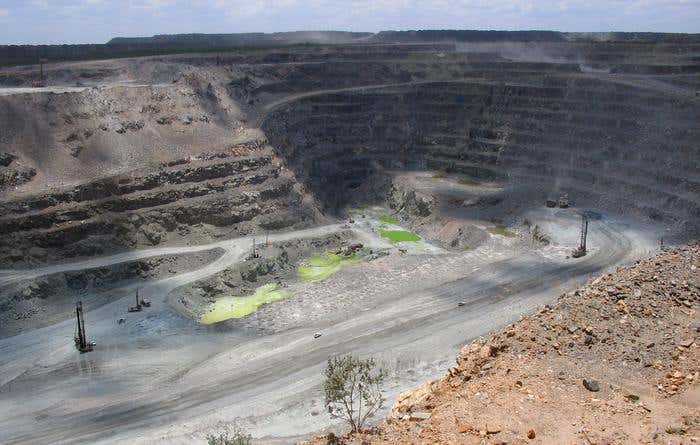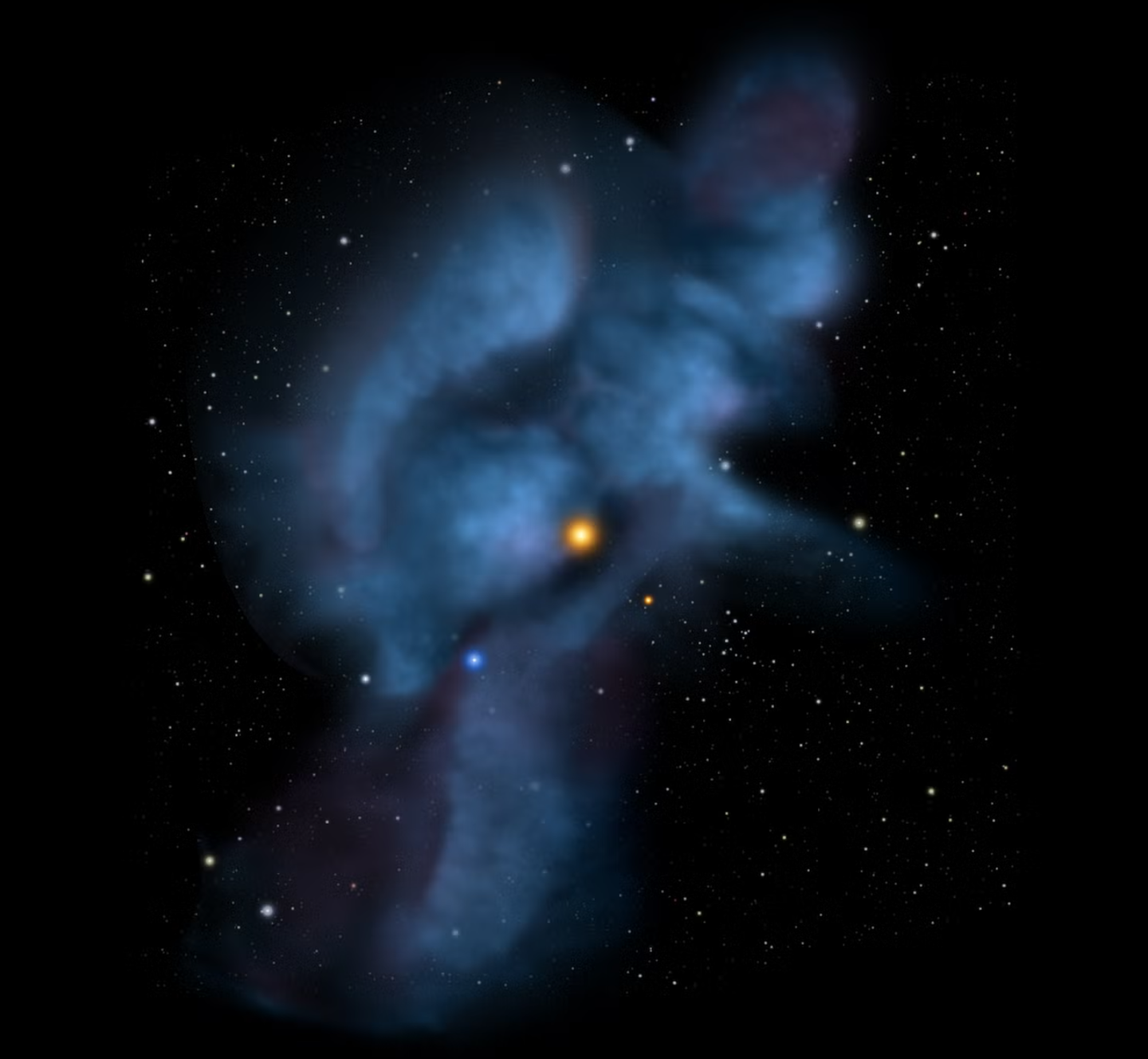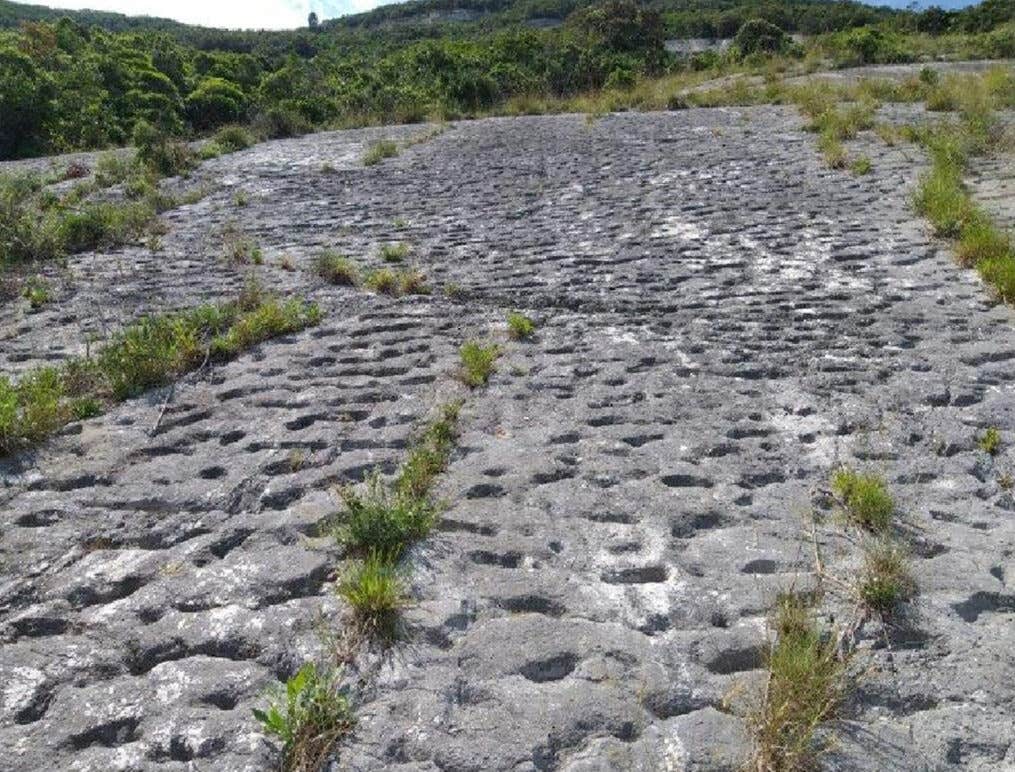Explosive new research could spark future diamond discoveries
Direct link between the breakup of tectonic plates and the genesis of diamond-rich magmas that surge from the Earth’s deepest realms.

[Aug. 10, 2023: Staff Writer, The Brighter Side of News]
Venetia Diamond Mine, South Africa. (CREDIT: Professor Tom Gernon, University of Southampton)
In a groundbreaking revelation that brings to light the mysteries of Earth's crust and its treasure trove of diamonds, an international collaboration led by the University of Southampton has established a direct link between the breakup of tectonic plates and the genesis of diamond-rich magmas that surge from the Earth's deepest realms.
These recent findings, which were published in the esteemed journal Nature, could potentially redefine the landscape of diamond exploration, presenting a new paradigm for where these priceless gems are most likely to be concealed.
The Age-old Enigma of Diamonds
Diamonds, symbolic of eternity and coveted for their unparalleled brilliance, are not merely geological marvels; they are ancient time capsules. Formed under the immense pressures of the Earth's mantle, these gems encapsulate timeframes spanning hundreds of millions to billions of years.
Their common association with a specific type of volcanic rock, known as kimberlite, is well-established. Intriguingly, these kimberlites grace the ancient, robust cores of continents, with South Africa — the historic epicenter of the 19th-century diamond rush — being a prime example. But the puzzle of how these diamonds embarked on their journey to the Earth's surface has perplexed scientists for ages.
Related Stories
A Scientific Collaboration Spanning Continents
To demystify this enigma, Southampton researchers teamed up with a global cohort from esteemed institutions, including the University of Birmingham, the University of Potsdam, the GFZ German Research Centre for Geosciences, Portland State University, Macquarie University, the University of Leeds, the University of Florence, and Queen’s University, Ontario.
Tom Gernon, the luminary spearheading this research as the Professor of Earth Science and Principal Research Fellow at the University of Southampton, illuminated, “The pattern of diamond eruptions is cyclical, mirroring the cadence of supercontinents that form and disband in a rhythmic dance over eons. What remained elusive was the trigger that unleashes these diamonds, which have remained dormant 150 kilometers beneath our feet for aeons.”
A Deep Dive into Geological Processes
Addressing this, the team harnessed state-of-the-art statistical tools, integrating machine learning, to meticulously probe the association between the fracturing of continents and kimberlite volcanic activities. Their analysis painted a vivid timeline: most kimberlite volcanic eruptions manifested a couple of decades — specifically 20 to 30 million years — post the tectonic disintegration of Earth's landmasses.
Jwaneng Diamond Mine, Botswana. (CREDIT: Professor Tom Gernon, University of Southampton)
Dr. Thea Hincks, a Senior Research Fellow at the University of Southampton, remarked on their geospatial analysis, "It became evident that kimberlite eruptions tend to progressively journey from continental fringes to their heart, with a consistent pace across different continents."
Such findings propelled the team to investigate the geological machinery underpinning this phenomenon. They discovered a fascinating interplay deep within the Earth's mantle, revealing that even remote crustal stretching has ripple effects that can convulse the mantle, spawning deep disruptions.
Dr. Stephen Jones, an Associate Professor in Earth Systems at the University of Birmingham, elucidated, “A cascade of events, much like dominos toppling, is set in motion when continents stretch. A fragment of the continental root gets unhinged, plunging into the mantle and catalyzing similar turbulent flows beneath neighboring continental regions.”
Macle twin diamond discovered in Arctic Canada by Tom Gernon. (CREDIT: Professor Tom Gernon, University of Southampton)
Validating this theory, Dr. Sascha Brune from the GFZ Potsdam, ran exhaustive simulations, observing, “These tumultuous currents sweep across the continental root, eroding substantial rocky layers, sometimes tens of kilometers thick, from the base of the continental plate.”
These findings resonated with the movement patterns extracted from kimberlite records, underpinning the team's hypothesis.
Dr. Gernon, building on this, stated, “What's truly astonishing is how this process orchestrates the perfect conditions, mustering the precise ingredients in the right proportions, to instigate the melting that births kimberlites.”
Diamond in its host rock (kimberlite). (CREDIT: Dr Richard Brown, University of Durham)
A Rosy Future for Diamond Exploration
Besides unlocking the cryptic life cycle of diamonds, this research offers a blueprint for pinpointing past volcanic eruptions and potentially heralding new diamond discoveries.
Furthermore, Professor Gernon, the recent recipient of a substantial grant from the WoodNext Foundation, emphasized the broader implications, "These tectonic shifts don't just sculpt the mantle; they also have profound ramifications for the Earth's surface ecosystem and climate. Diamonds, it seems, are just the tip of this intricate iceberg."
This monumental study not only unravels the arcane secrets of diamonds but also underscores the interconnected tapestry of processes deep within our Earth that reverberate through time and space, influencing our planet in ways previously unimagined.
Note: Materials provided above by The Brighter Side of News. Content may be edited for style and length.
Like these kind of feel good stories? Get the Brighter Side of News' newsletter.



